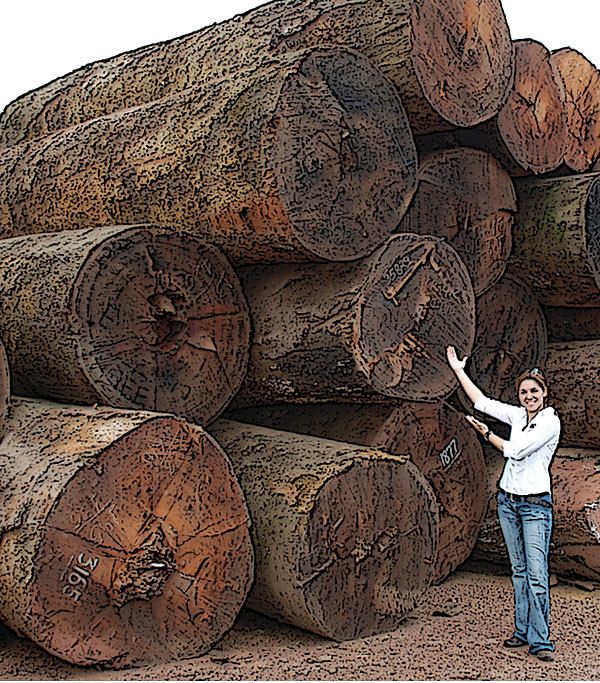Tailgate: Viviane Peixoto, Lumber Importer
This native Brazilian is working to ensure that tropical hardwoods are harvested sustainably, guaranteeing their availability for years to come.

Describe your work.
I am import director for AdvantageLumber.com. I coordinate most of the company’s hardwood-decking lumber purchases.
How did you get into the field?
I grew up in Brazil, where much of my family was deeply involved with the lumber industry and furniture production. Where I grew up, you were either into cattle or lumber. Lumber smelled a whole lot better, so it was an easy choice.
When I moved to the States, I saw an ad for a Portuguese-speaking assistant with AdvantageLumber.com, and I thought, “I can get paid for knowing Portuguese?”
Unfortunately, my new profession also involved sleeping in hammocks in the jungle, living for days on Nutri-Grain bars, traveling to dangerous South American villages, dodging South American gangs and thieves, and breathing dust in jungle logging camps. I do get to travel to some of the nicest South American locations, but unfortunately, lumber doesn’t always grow in luxury areas.
Rain-forest destruction is a big concern today. What do you say to those who see lumber companies as part of the problem?
I prefer to address the critics with fact-based conversations, usually starting by asking: What logging concessions have they visited? What mills have they inspected? What forest engineers have they consulted with? The answers usually lack any substance, and they realize the conversation should be fact-based instead of relying on assumptions and media-driven emotions.
The fact is, there is illegal logging; there are good lumber companies and bad lumber companies. Just because there are bad doctors out there doesn’t mean it’s sensible never to go to the doctor, yet activist groups want to boycott lumber just because some bad companies exist.
There are whole towns and cities in South America where lumber companies are the only major job providers. The companies provide the schools, the hospital, and the only source of employment. A boycott of imported wood would not help, would be detrimental to the local residents, and would lead to forest destruction because if you remove the export value of the forest, local farmers would slash and burn to cultivate agricultural products on the land.
The sensible solution is putting a value on the timber by creating a positive demand for the product and practicing good forest management to cultivate the resource for generations to come.
How does your company promote sustainable forestry?
Our company is certified by the FSC (Forest Stewardship Council). I assist in our annual FSC audit, and we promote FSC thought processes in non-FSC procurements. For example, we promote the use of odd- and even-length lumber so that we don’t waste hundreds of 1-ft. pieces to satisfy the typical even-length-only U.S. market.
At the end of the day, the important thing is practicing proper forest management and improving the health of the forest—not the label, the higher price, or the bragging rights of having a special eco-designation. Making sure our products are not only sourced legally but also responsibly is what I consider the most important aspect of my job.
Are sustainability efforts making a difference?
Brazil has come a long way in ensuring proper forest management. Typically, three trees are extracted from an area the size of a soccer field. The trees are critically selected by a forest engineer who uses government guidelines to decide which older trees no longer produce seed and are restricting smaller surrounding trees from flourishing. After the removal of these older, non-seed-producing trees (also known as wolf trees), the smaller trees can flourish from increased sunlight and water.
If you were building a new deck, what tropical hardwoods would you choose to build it, and why?
Projects that blend species—one for the railings, one for the benches, and one for the decking, with a border in another species—are my favorites. We have customers who are mixing species of hardwoods like ipé with Tigerwood, garapa, cumaru, and massaranduba for aesthetic reasons, and I think I would do the same because it shows off the natural colors of the woods.
It’s also important for forest diversity not to get fixated on just one species of wood. They all have good physical properties and weatherability.
Illustration: Jacqueline Rogers

























